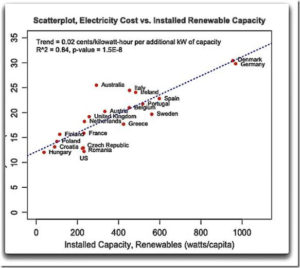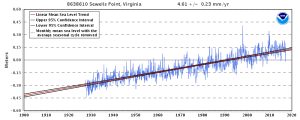by Judith Curry, July 15, 2017 in ClimateEtc.
In understanding climate change risk, and deciding on the ‘if’ and ‘what’ of ‘action’, we need to acknowledge that we don’t know how the climate of the 21st century will play out (Deep Uncertainty, folks). Four possibilities:
-
It is possible that human-caused climate change will be swamped by much larger natural climate variability.
-
It is possible/plausible that the sensitivity of the climate is on the low end of the IPCC envelope (1.0-1.5C), with a slow creep of warming superimposed on much larger natural variability.
-
It is possible/plausible that the IPCC projections are actually correct (right for the wrong reasons; too much wrong with the climate models for much credibility, IMO).
-
It is possible that AGW and natural variability could conspire to cause catastrophic outcomes






